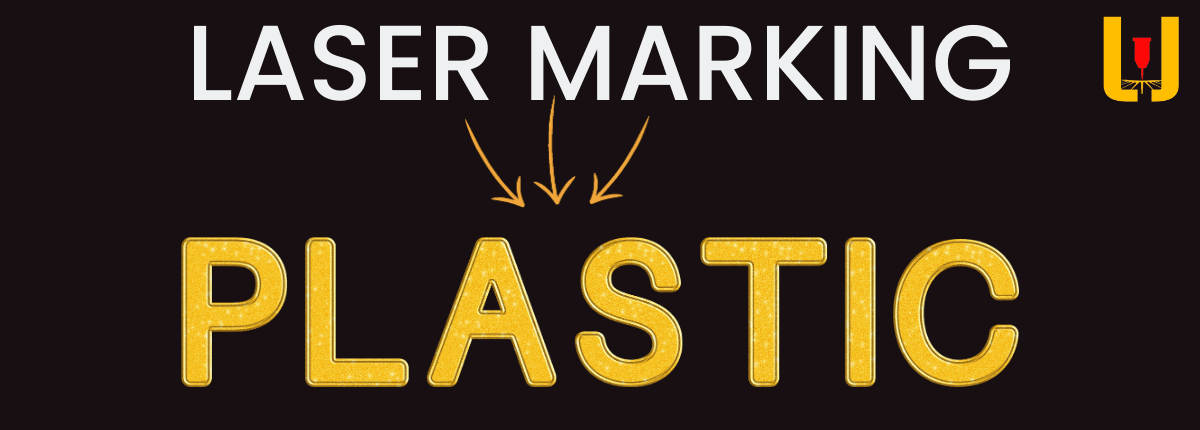Imagine a world where every plastic component, from the smallest electronic part to the largest automotive panel, carries a mark of perfection—Laser Marking for Plastic with precision, unalterable by time or environment.
This isn’t a glimpse into a distant future; it’s the reality crafted by laser marking technology. But what makes laser marking on plastics so revolutionary? How does it ensure unparalleled accuracy and durability in marking applications?
Stay with us as we delve into the intricacies of this cutting-edge technology, explore its myriad benefits, and uncover why it’s becoming indispensable across industries. By the end, you’ll gain exclusive insights into how laser marking can transform your production process, enhance product traceability, and ensure compliance with industry standards.
The Power of Laser Precision
Laser marking on plastics leverages the incredible precision of laser beams to create detailed, permanent marks without physically contacting the material. This non-contact process ensures that even the most delicate plastic components remain unharmed while achieving marks that are highly resistant to wear, heat, and chemicals.
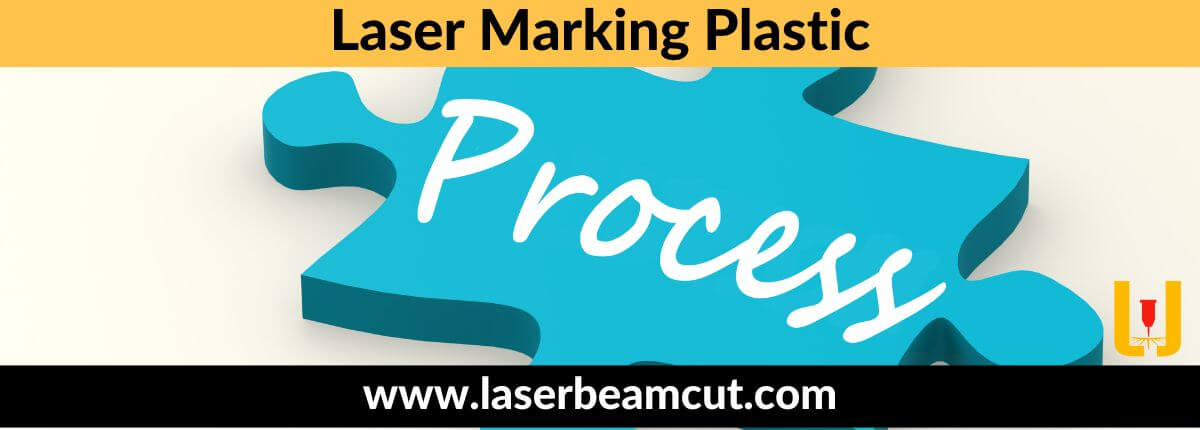
The versatility of laser marking means it can be applied to a wide range of plastics, from common thermoplastics like polyethylene and polypropylene to high-performance polymers used in aerospace and medical devices.
With the ability to produce everything from fine text to intricate logos and complex barcodes, laser marking offers unmatched flexibility. But what truly sets this technology apart is its ability to provide clear, crisp, and consistent marks, vital for quality control and traceability.
Unveiling the Technological Magic
At the heart of laser marking is a finely tuned laser beam, which can be precisely controlled to achieve various marking techniques such as engraving, etching, foaming, and carbonizing. Each method has its unique benefits, allowing manufacturers to choose the best approach based on the plastic type and desired mark.
For instance, laser foaming creates high-contrast, raised marks on dark plastics, while laser carbonizing produces sharp, dark marks on light-colored plastics. The adaptability of laser marking systems means they can be seamlessly integrated into automated production lines, enhancing efficiency and reducing downtime.
But how exactly does this process maintain such high precision and consistency? The secret lies in the advanced software that controls the laser, ensuring that every mark is made with pinpoint accuracy. Additionally, the non-contact nature of laser marking minimizes wear and tear on machinery, leading to lower maintenance costs and longer equipment lifespans.
Wondering how these technological advancements translate to real-world applications? Keep reading to discover how industries from automotive to medical are leveraging laser marking to enhance their operations and ensure product excellence.
Laserable Plastics for Marking Process
Plastics are versatile and widely used materials. These exhibit different behaviors when exposed to laser radiation. The ability of a plastic to absorb, transmit, or reflect laser energy depends on its macromolecular structure.
It comes in various types. Each plastic has its own set of characteristics, such as thermal conductivity, melting point, and surface tension. Therefore, it is recommended to test and optimize the laser parameters depending on the plastic type to ensure the best results.
ABS Plastic
ABS is called Acrylonitrile Butadiene Styrene. This thermoplastic is used in various industries. It offers excellent durability and impact resistance. That makes it suitable for a range of applications. When it comes to laser operations, ABS plastic presents certain limitations. Although it can be cut, or engraved using a low-power laser. But it produces harmful fumes by turning it to melting phase.
As in marking process, laser only alter the surface to produce labels on it. So, it is safe for this process. It produces acceptable results even without any additive use.
Polycarbonate (PC)
Polycarbonate is a thermoplastic material. It is widely recognized for its excellent properties. It is a possible choice for laser marking applications. With its high impact resistance and durability, it offers great potential for marking intricate designs. When it comes to laser marking, the type of laser used is crucial. And a CO2 laser with the appropriate wavelength is ideal for working with polycarbonate.
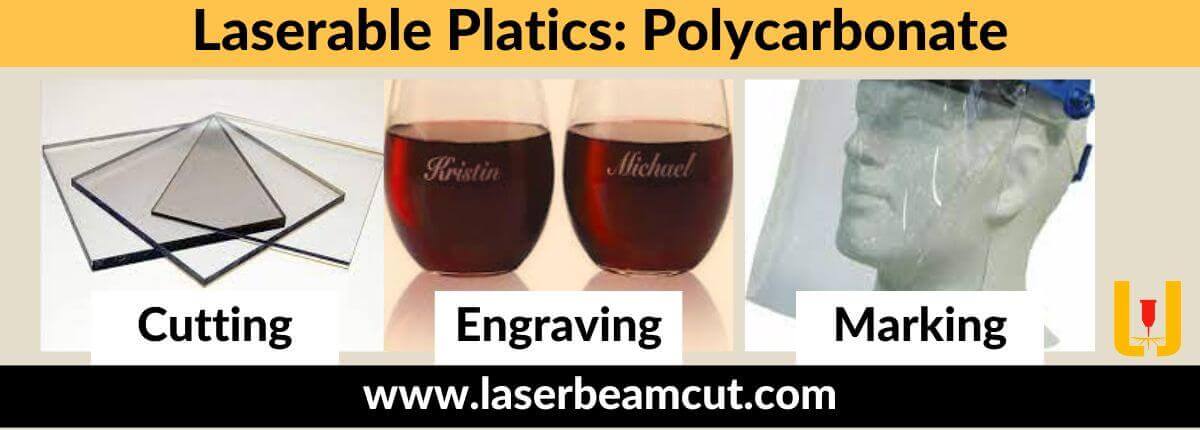
Types of polycarbonate are
- Lexan
- Lupoy
- Makrolon
These variants possess a high level of detail and exhibit good results when marked using a low-power laser. Additionally, their carbonate content ensures durable and long-lasting labels.
However, it is important to consider certain factors marking polycarbonate. Yellowish discoloring may occur during the process. It may also produce smoke during the process. To minimize these effects, precautions should be taken. Adjusting laser parameters and using appropriate ventilation systems can help these challenges.
Polycarbonate can be marked by using a fiber laser. This method yields excellent results with high levels of detail. It ensures precise and permanent markings on the material’s surface.
Delrin (POM)
Delrin is known as polyoxymethylene (POM) or polyacetals. It is a thermoplastic that belongs to the family of high-strength plastic materials. Due to rigidity and low friction properties, it is an ideal material for various applications.
When laser marking Delrin plastic, it is important to consider the laser settings and parameters to achieve the desired mark. The power, speed, and frequency of the laser should be optimized based on the specific properties of Delrin to ensure proper marking without causing melting or burning of the material.
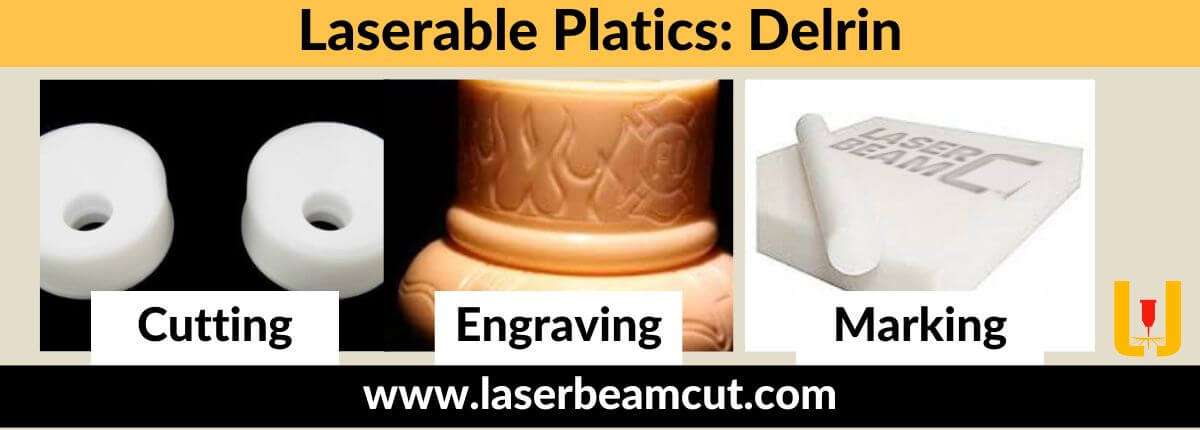
One of the advantages of using Delrin for laser marking is its excellent finishing capabilities. Due to this, it is an appealing option for engraving intricate designs and detailed patterns on various objects.
Due to their high strength properties, Delrin’s are used in bearings, pumps, and gears. It is possible to mark or engrave these products using lasers.
Mylar or polyester
Mylar is a type of polyester film. It is commonly used in laser processing applications, particularly in CO2 laser systems. Its unique properties make it an ideal material for laser cutting, marking, and engraving. The CO2 laser, with its specific wavelength, is well-suited for working with Mylar.
The focused laser beam effortlessly slices through the material. It produces clean cuts and accurate edges. This process is especially useful for creating intricate designs and complex shapes on Mylar surfaces.
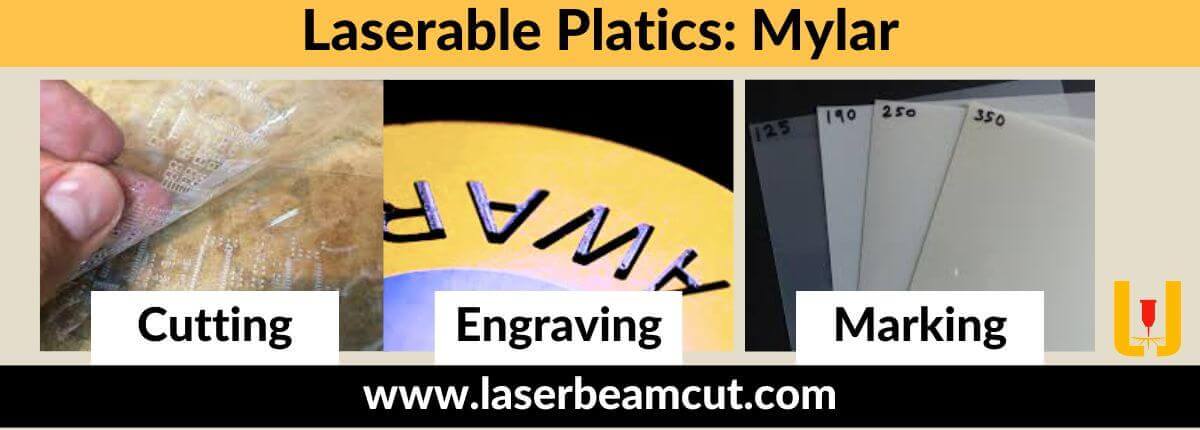
When Mylar is marked or engraved using a CO2 laser, it undergoes a surface transformation. The laser beam interacts with the material, altering its appearance and leaving a permanent mark. The result is a high-quality and professional finish that enhances the visual appeal of Mylar products.One of the key advantages of using Mylar in laser processing is its exceptional structural integrity. Despite its thinness, Mylar exhibits high tensile strength. It enables it to withstand the laser cutting process without tearing or distorting. This attribute ensures that the final product maintains its shape and durability.
Polyimide
Polyimides, such as Kapton, are a class of thermosetting polymers. These have various industrial applications due to their exceptional properties. These have high chemical resistance properties. It ensures material integrity during the laser process.
Polyamide plastics can be marked using lasers by utilizing a process called laser ablation. In laser ablation, the high-intensity laser beam removes a thin layer of material from the surface, resulting in a contrasting mark. The specific settings and parameters used for laser marking polyamide will depend on factors such as the type of laser system, power, wavelength, and desired mark quality.
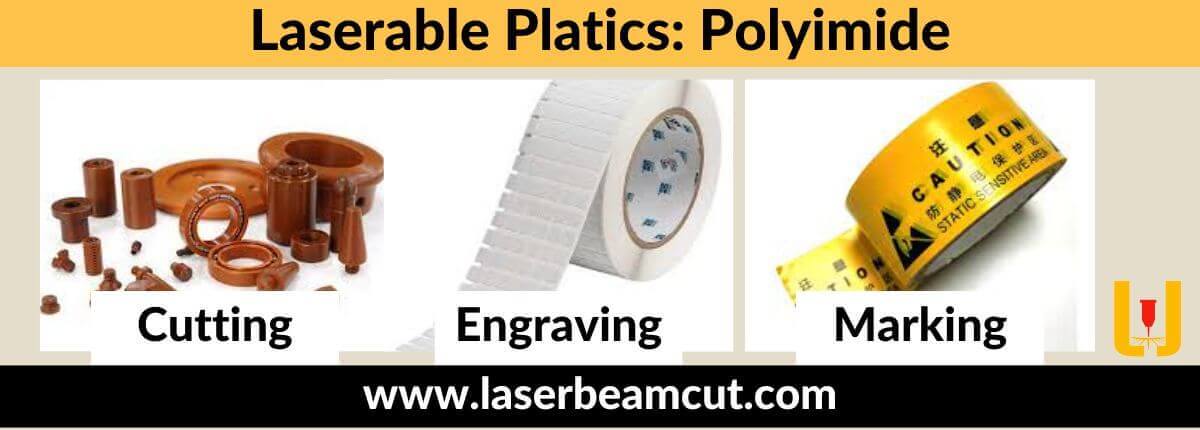
Polyimides are excellent electrical-resistant plastics. Polyimides offer good mechanical properties for numerous marking applications.
Acrylic
Acrylic is a thermoplastic material. It uses in various industries. And it can not be laser marked with direct process. You can mark it by using special marking sprays before the process.
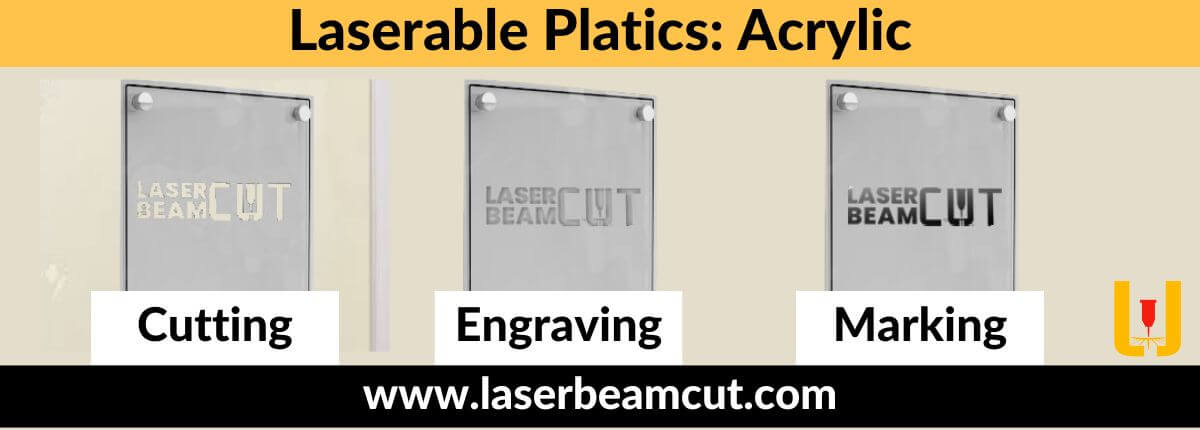
There are two common types of acrylic plastics.
- Cast Acrylic
- Extruded Acrylic
Plastic Types that Can Not be Laser Marked
Fluoropolymers (PTFE)
Fluoropolymers (PTFE) are plastics that exhibit unique properties due to the carbon and fluoride bonding within their molecular structure. These materials are highly suitable for laser engraving applications but not for laser marking.
There are various further types of fluoropolymers.
- Teflon
- Kel-F
- Halar
PVC
Polyvinyl chloride (PVC), a widely utilized thermoplastic material. It holds a prominent position among the various industries. It plays a crucial role in sectors such as healthcare, electronics, and plumbing, offering immense benefits. The inherent strength and remarkable versatility of PVC make it highly suitable for various applications that find their way into our daily lives. PVC finds extensive utilization in the manufacturing of essential items like pipes, wire insulation, blood storage bags, flooring, and synthetic leathers.
When it comes to laser marking, PVC with a high vinyl content can pose certain challenges and risks. The process of laser mark PVC can generate harmful fumes due to the presence of chlorine in the material. That can be damaging if inhaled. Therefore, it is essential to handle PVC and laser equipment with caution to avoid potential health hazards.
Applications Of Laserable Marked Plastics
The applications of laser marking on plastic materials are extensive and diverse. Here are some notable examples:
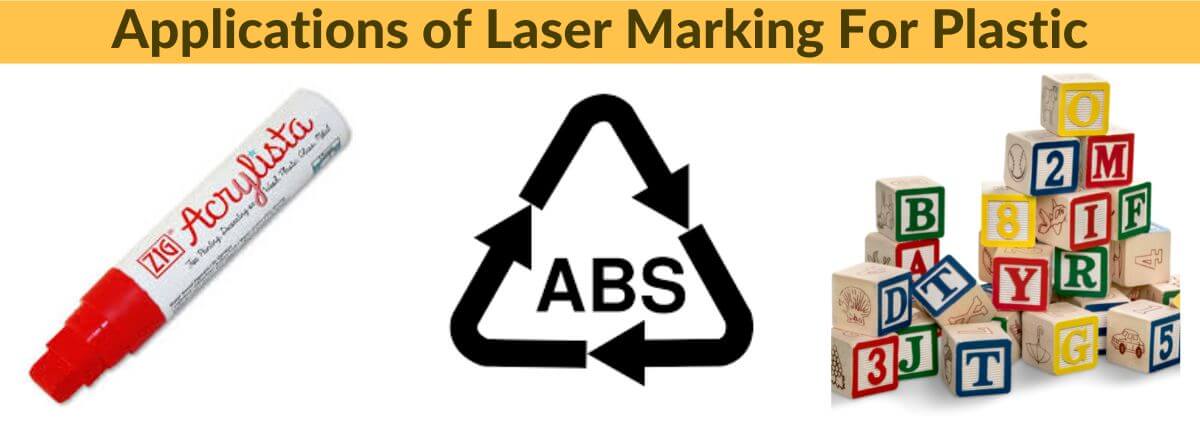
Product Identification
Laser marking is widely used for product identification purposes on plastic materials. It allows for the precise and permanent marking of product names, serial numbers, barcodes, and logos. This enables efficient tracking, traceability, and anti-counterfeiting measures.
Consumer Electronics
It is commonly employed in the consumer electronics industry for marking plastic components such as keyboards, keypads, and device housings. It provides clear and durable markings, enhancing product aesthetics and brand recognition.
Medical Devices
Laser marking is crucial in the medical device industry for marking plastic components like surgical instruments, implants, and medical equipment. It ensures accurate and permanent identification. It assists in device tracking, sterilization, and regulatory compliance.
Automotive and Aerospace
It is utilized extensively in the automotive and aerospace sectors for marking plastic parts, such as dashboards, instrument panels, switches, and interior components. Laser marking provides durability, resistance to wear, and compliance with industry standards.
Packaging and Labeling
This is employed in the packaging and labeling industry for marking plastic packaging materials, such as bottles, containers, and films. It enables the inclusion of product information, expiration dates, batch codes, and branding, ensuring readability and durability throughout the product’s lifespan.
Promotional Items and Gifts
It is commonly used to personalize plastic promotional items and gifts. It allows for the customization of items like pens, keychains, phone cases, and awards, adding a personal touch and enhancing their value.
Electrical and Electronics
Laser marking finds applications in the electrical and electronics industry for marking plastic components, including circuit boards, connectors, and cable insulation. Laser markings assist in identification, assembly, and maintenance processes.
Signage and Displays
It is employed in the signage and displays industry for marking plastic materials like acrylic, polycarbonate, and PVC.
It enables the creation of intricate designs, precise texts, and detailed graphics on plaques, nameplates, and architectural signage.
Future of Laser Marking for Plastic
The future of laser marking plastic is promising and bright. Laser marking is increasingly popular due to its high precision and versatility. The demand for laser marking on plastic components is expected to grow significantly, especially in the medical, automotive, and consumer electronics industries.
Advancements in laser technology will make the process faster and more cost-effective. It enables its use for mass production. Moreover, the rise of AI (Artificial Intelligence) and IOT (Internet of Things) will change the manufacturing and designing industries. Machines will take decisions on our past experiences and produce the exact outputs that we need. Overall, laser marking plastic holds a prosperous future with expanding applications and enhanced capabilities.
Summary
Laser marking plastic is an efficient and precise method of labeling plastic products. It uses a specific type of laser to mark the plastic surface. It gives permanent and legible markings.
Different types of plastics behave differently under the laser beam, with some requiring marking sprays or additives. Factors such as plastic-type, laser parameters, and marking sprays affect the marking process.
Laser markers with various laser types and wavelengths are available for different plastic materials. Laser marking can achieve color change, ablation, and foaming effects, providing flexibility and high-quality results.
FAQs (Frequently Asked Questions)
1. What is Thermosetting Plastic?
Ans: Thermosetting plastic is a type of polymer that, once cured, cannot be melted or reshaped by heat. It uses in applications that require high heat resistance, rigidity, & durability.
2. What is PP Material?
Ans: PP (Polypropylene) is a thermoplastic polymer. It is lightweight, durable, and resistant to chemicals, moisture, and high temperatures. PP material uses in consumer goods, packaging, and textiles.
3. What is Delrin?
Ans: Delrin is a brand of polyoxymethylene (POM), a thermoplastic material known for its high stiffness, low friction, and good dimensional stability.
4. What chemicals are used to make plastic?
Ans: Several polymers use in the production of plastics, including ethylene, propylene, benzene, and toluene. Manufacturers also use pigments, stabilizers, and fillers as additives.

